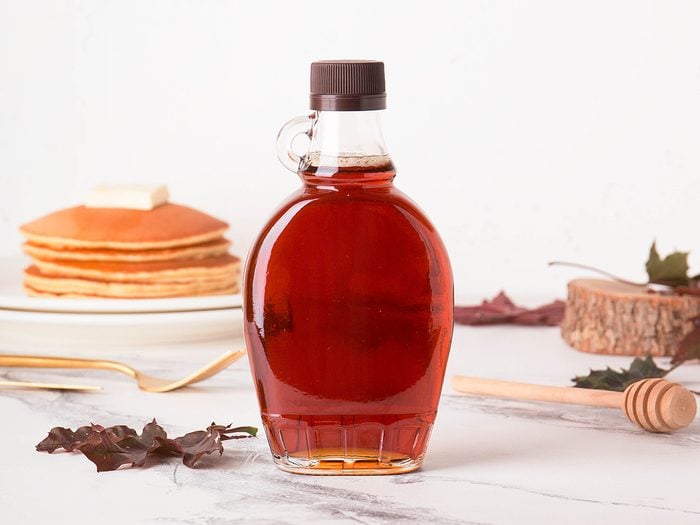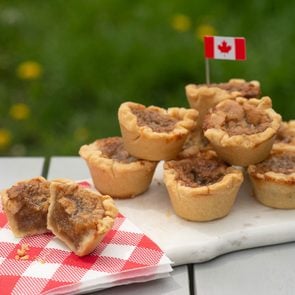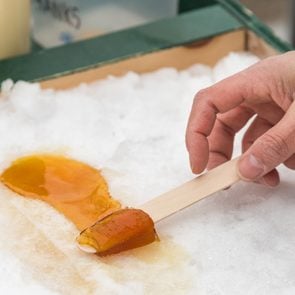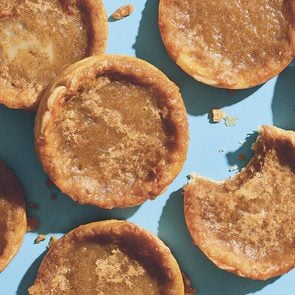The Real Reason Maple Syrup Bottles Have Those Tiny Handles

Finally—a solution to this sticky mystery.
Nothing beats fresh-off-the-griddle pancakes for breakfast. After slathering your stack in butter, you reach across the table for the maple syrup; but what part of the bottle are you going to grab—the bulky base, or that absurdly small handle? If we’re being honest, the teeny-tiny handle perched on the neck of the bottle isn’t very practical and your finger may even have gotten stuck in it at some point. So why does it exist?
Believe it or not, there’s a reason why maple syrup bottles have those petite handles, but we’ll need to review a bit of Canadian history to find the answer.
The origins of maple syrup
“What was produced since the beginning of time by Indigenous people was maple sugar, because that kept more easily than the syrupy form,” says Jean-François Lozier, a curator at the Canadian Museum of History who specializes in French North American history. There was no easy way to store syrup as a liquid, but hardened, dry maple sugar could be packed with ease in traditional birch bark baskets.
It wasn’t until the late 19th-century that the consumption and production of maple syrup started overtaking maple sugar. When early Canadian colonists took up the Indigenous practice, maple syrup became more commonly stored in tin cans, which were more efficient for packaging and transportation.
Why is maple syrup packaged in glass bottles today?
You can’t simply pour maple syrup into any container and call it a day. There are three things to consider: temperature, time and air. To preserve the quality of the syrup, it’s best to store it in the refrigerator and in a completely airtight container. The familiar glass bottles that you’ll find on grocery store shelves today pull double duty by maintaining the flavour of the syrup for a longer period of time because they prevent oxidization—and they also showcase its rich amber hue.
So what’s with the tiny handles?
During the late 1800s, salt-glazed stoneware was the equivalent to Tupperware. Although not typically used to store maple syrup, the heavy round ceramic jugs were used to hold everything else, from molasses to liquor, and had large handles which made them easier to carry. It wasn’t long until they were on their way out and replaced by a cheaper alternative: glass.
“Maple syrup companies weren’t so much retaining an old pattern of a jug as reinventing it and wanting to market their product as something nostalgic,” says Lozier. “They were tying in the image of maple syrup with their product and the image that people still had of those crocks in the 19th-century.” Essentially, the tiny handles that we’ve come to associate with the maple syrup bottle design were added purely as a decorative element, and as a tribute to the large ceramic jugs that once graced every Canadian home.
So, the next time you have a craving for maple syrup, take a moment to appreciate this subtle design nod to the past.
Next, find out what you can tell about maple syrup from its colour.






